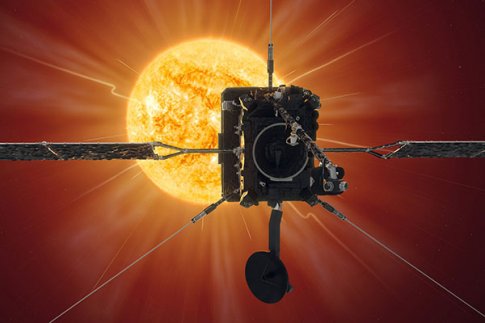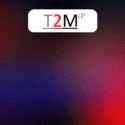
Cobham Advanced Electronic Solutions' RadHard Microelectronics Assist in Study of Sun and Earth Connection
CAES high reliability microelectronics featured on nine of ten ESA Solar Orbiter instruments
ARLINGTON, Va. — August 13, 2020 -- Cobham Advanced Electronic Solutions (CAES), a leading provider of advanced electronics for mission critical applications, announced today that an abundance of its radiation hardened (RadHard) and high reliability solutions are assisting in the European Space Agency’s (ESA) Solar Orbiter Mission. The mission is dedicated to understanding the Sun and Earth connection and the ESA Solar Orbiter recently took the closest-ever photos of the Sun in order to study how the star creates and controls the giant bubble of plasma that surrounds the whole Solar System and influences the planets within it.
As part of an international cooperative mission, the Solar Orbiter features ten instruments with scientific payload elements provided by ESA, ESA member states and NASA. The Solar Orbiter payload accommodates a set of in situ and a set of remote-sensing instruments, with a total payload mass of 209 kg. The majority of the scientific payloads are based on Cobham Advanced Electronic Solutions’ LEON microprocessors and Intellectual Property cores as well as RadHard microelectronics including memory ICs, comparators, LVDS serializers/deserializers and more.
“Cobham Advanced Electronic Solutions is excited to play such a significant role in ESA’s historic Solar Orbiter mission, which will help the world better understand how the Sun creates and controls the heliosphere,” said Kevin Jackson, Vice President and General Manager, Semiconductor and Space Solutions for Cobham Advanced Electronic Solutions. “At CAES, space and space exploration is a vital part of who we are and we continually strive to provide cutting-edge solutions that not only meet the stringent requirements of space environments but exceed performance and reliability expectations.”
For over 20 years, Cobham Advanced Electronic Solutions and its Cobham Gaisler group in Gothenburg, Sweden have worked closely with the European Space Agency on various space missions and product developments. Radiation hardened by design, CAES high reliability and Gaisler products are featured in nine of the ten ESA Solar Orbiter instruments. These include the GR712RC Dual-core and UT699 Single-core LEON3FT Microprocessors; RHD5910 Comparator; UT54LVDS218 LVDS Serializer/Deserializer; a variety of memory devices such as UT28F256LVQLE PROM, UT8MR2M8 MRAM, UT8CR512K32 SRAM, UT8R512K8 SRAM, UT8ER4M32 SRAM, flash memory as well as CAES SpaceWire, ASICs and GRMON and GRESB design tools.
“We have made very positive experience with Cobham Advanced Electronic Solutions LEON processors in other space instruments, so the GR712RC was our first choice for the PHI DPU to combine the ease of programming of the processor with the processing power of dedicated logic for a high performance and reliable space system,” said Björn Fiethe, Senior Engineer, IDA Institute of Computer and Network Engineering, Technische Universitaet Braunschweig. IDA has designed the data processing unit (DPU) for the Polarimetric and Helioseismic Imager (PHI) payload instrument.
The Mullard Space Science Laboratory (MSSL) in the United Kingdom designed the Common Electronics Box (CEB) for the Extreme Ultraviolet Imager (EUI) payload instrument. "This is the first time we have used a Cobham Advanced Electronic Solutions LEON processor for a space mission and the UT699 was a pleasure to program with the familiarity of GCC and the other GNU tools together with the stability and functionality of RTEMS,” said Philip Smith, MSSL, University College London. “Thanks to the CAES team and design resources and team, we were able to get started quickly with board-specific test code running after just a few days. The whole system can be run quickly and remotely over ethernet, particularly important during the COVID-19 crisis!"
The Radio and Plasma Wave Analyzer (RPW) payload on Solar Orbiter consist of a sophisticated plasma/radio wave receiver system connected to high sensitivity electric and magnetic sensors. Since the receiver system covers a very wide frequency range (quasi-DC to 20 MHz for electric, and 0.1 Hz to 1 MHz for magnetic), different kinds of sensors are used for the measurements. The RPW payload integrates two Data Processing Units (DPU), operating in cold redundancy. They control all the RPW operations and tasks. Specifically, they handle the communication with the Data Management System (DMS) of the spacecraft using two independent SpaceWire interfaces. Commands from the spacecraft are decoded and executed or distributed to the subsystems. On the other hand, data from the subsystems are collected, and eventually post-processed in the DPU prior to be sent to the DMS. The DPU is designed around the radiation-hardened UT699 LEON3FT processor, which is based upon the industry-standard LEON SPARC V8 architecture. The DPU is equipped with a 64kB boot PROM UT28F256 (Programmable Read Only Memory) and 64MB of radiation-hardened SRAM (Static Random Access Memory) UT8R4M39. The SpaceWire link for the communication with the spacecraft is based on the LVDS drivers and receivers UT54LVDS031 and UT54LVDS032. The IWF institute in Austria has built the DPU and has calibrated the RPW antennas, using numerical analysis and anechoic chamber measurements. Furthermore, the IWF institute has contributed to the magnetometer.
“When designing the DPU for Solar Orbiter RPW, it was the first time we used a processor from the LEON3/4 family. Due to the positive experience, we have now selected the dual-core GR712RC and the controller GR716A for the designs we are presently involved. In parallel we are already running tests with the evaluation board of the quad-core GR740, which is planned to be the core element in our future applications”, said Manfred Steller, Group Leader, IWF, Space Research Institute, Austrian Academy of Sciences.

About Cobham Advanced Electronic Solutions Space Portfolio
Cobham Advanced Electronic Solutions is a premiere provider of mission-critical technologies for commercial, civil, military, and other government spacecraft. With a space pedigree spanning nearly 40 years and technology on nearly every spacecraft in the free world, CAES offers a full range of solutions for the world’s leading launch vehicles, satellites and space exploration spacecraft. Key capabilities include radiation hardened (RadHard) and high reliability microelectronics, application specific integrated circuits (ASICs), electronic manufacturing services, LeanREL® components, motion control and positioning, antennas and apertures, radiation effects testing, RF, microwave and millimeter wave microelectronics, motion control devices, power solutions, intellectual property cores, avionic solutions and LEON/SPARC processors. For more information, visit www.cobhamaes.com/space.
About Cobham Advanced Electronic Solutions:
Cobham Advanced Electronic Solutions is the largest provider of analog and radiation hardened technology for the United States aerospace and defense industry. With a broad portfolio of off-the-shelf and customized RF, microwave and high reliability microelectronic products and subsystems, CAES offers a complete range of solutions for the entire signal chain from aperture to digital conversion. www.cobhamaes.com
 English
English Mandarin
Mandarin




 Back
Back